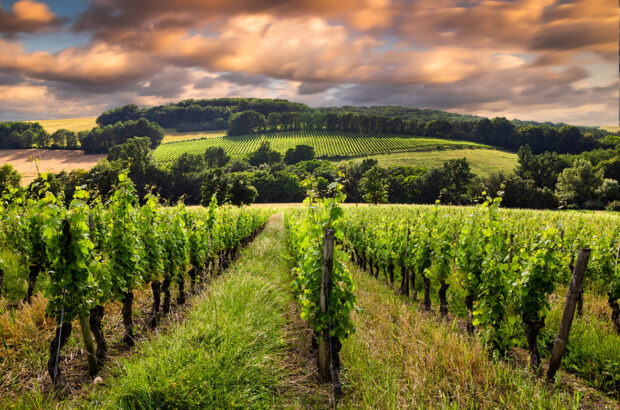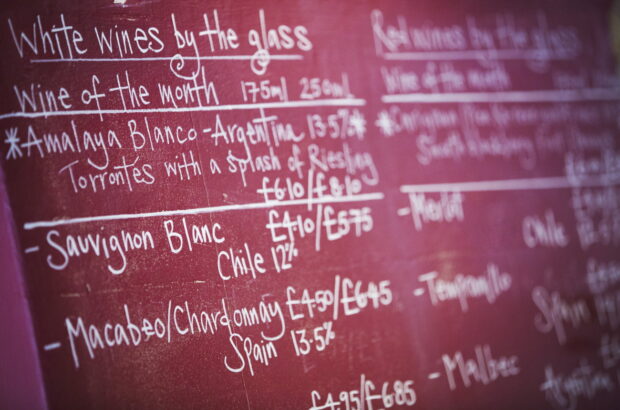Francophile JAMES LAWTHER MW may be more used to clarets and Rhônes, but when we sent him to New Zealand, he felt right at home among the classic-style Bordeaux blends and Syrahs of Hawke’s Bay
The drum roll for New Zealand Pinot Noir has been at such a pitch, you could be forgiven for thinking it’s the nation’s only red variety. Comparisons with Burgundy have been all the rage, yet a few events recently confirmed that the Land of the Long White Cloud has two other styles to offer in the serious red category. Both also ape French counterparts: Bordeaux and the Rhône.
At the Air New Zealand Wine Awards in Auckland, where I was an overseas judge, a Kiwi Syrah won Champion Wine of Show for the second year in succession. Church Road Reserve Syrah 2007 topped the all-category final, taking the mantle from Trinity Hill Homage Syrah 2006, the previous year’s winner.
Meanwhile, at a blind tasting of 2005 Bordeaux classed growths and Hawke’s Bay (Gimblett Gravels) claret-styles held at Lake Taupo, a team of judges headed by experts James Halliday and Bob Campbell MW gave the top slot to a local wine, Blake Family Vineyards’ Redd Gravels.
It beat Lafite-Rothschild into second place with two other ‘natives,’ close behind: Sacred Hills’ Helmsman Cabernet Sauvignon Merlot and Mills Reef’s Elspeth Cabernet Sauvignon took third and fourth places respectively, seeing Mouton-Rothschild back in fifth.
Such was the interest that the tasting is set to be repeated in London as we go to press, with a panel to include Jancis Robinson MW, Michael Schuster (see his Bordeaux comparitive piece onCoonawarra Cabernet, p34) and Robert Parker’s man in the UK, Neal Martin.
While it’s always best to keep an open mind about such results, they reconfirmed the progress I’ve seen since a previous visit to New Zealand in 2000.
Yes, there is still a green character in some reds that was prevalent in bygone years, and the quality of tannin needs further polishing, but there’s now a greater number of estates producing wines with depth and character than in the past. Site selection and good vineyard
husbandry are essential, and favourable vintage conditions are a big factor in this part of the world. But get it right and New Zealand Bordeaux and Rhône blends can be an eye-catching number.
Getting it ripe
New Zealand has a reputation for being a cool-climate zone, but with a northsouth span of 1,500 kilometres, regional variation comes into play. The South Island (Central Otago, Marlborough) and the south of the North Island (Wairarapa) have definite cool-climate profiles, hence the lean towards early ripening Pinot Noir.
But further north in Hawke’s Bay and Auckland, the growing season is warmer, allowing the cultivation of Merlot, Syrah and Cabernet. Even so, help is needed to get full physiological ripeness, hence the value of site selection and vineyard cultivation.
‘The Cabernet misses that surplus of 30°C-plus days, so we have to maximise the work in the vineyards to get it right,’ says Rod Easthope, winemaker of Craggy Range’s red wines. Unlike some New World regions, vintage variation is another key feature, due to rain-bearing easterly cyclonic depressions which can appear during the crucial picking time, in March and April.
Vintage variation; a warmer but still marginal zone for ripening Cabernet, Merlot and Syrah – ring any bells? Yes, conditions resemble Bordeaux and the northern Rhône, and if comparisons are to be made, then this is the direction in which to head. These are temperate wines rather than big, warm-climate brews, with natural acidity giving balanceand a fresh finish.
New Zealand’s hallmark vibrant fruit still comes through, but with a northerly note of black pepper for the Syrah (not called Shiraz here!) and a savoury, minerally touch to the Cabernet and Merlot.
Two areas have distinguished themselves for Bordeaux and Rhône styles – Waiheke Island and Hawke’s Bay. The former, in the Hauraki Gulf off Auckland, has a warmer climate than the city and a hilly terrain permitting site-specific plantings. Bordeaux blends have had a good reputation and Syrah is now making a mark here, though production is limited as most producers are small and their wines rarely distributed on a wide scale.
The best of the claret-style reds are Stonyridge’s Larose (a pioneering domaine established in the 1980s) and Te Whau’s The Point (worth a visit for the location and restaurant alone).
But Hawke’s Bay is the nation’s capital when it comes to Cabernet, Merlot and Syrah. About 75% of national plantings of these varieties are located here, with production even higher at 85%.
Of more interest to the consumer is the fact that both the Air New Zealand Champion Syrahs and the Bordeaux blends that were pitted against classed growth claret in Taupo hail from Hawke’s Bay. The Bordeaux blends here, like their French counterparts, are restrained and less of a show stopper than the Syrahs.
The difficulty in consistently ripening the Cabernet Sauvignon means it has suffered a downturn in plantings, but it still has advocates. ‘In the right spot, with the right mindset, Hawke’s Bay Cabernet can be outstanding,’ says consultant winemaker Jenny Dobson, formerly with Te Awa, and cellarmaster of the Médoc’s Château Sénéjac in the 1980s.
Merlot & co
Merlot leads in terms of plantings, with 1,022ha (hectares), and has some heavyhitting support, too. ‘Merlot has a bigger Pinot Noir as it can produce soft, elegant wines on a regular basis,’ says Jim Delegat of Delegats and the successful Oyster Bay brand (200,000 cases of Merlot yearly).
As in Bordeaux, blending (with Cabernet Franc, Malbec and/or Petit Verdot) is a great tool, both compensating for any vintage deficiencies and adding complexity. Te Mata unashamedly copied the French model, producing the first top-of-the-range Coleraine in 1982 from fruit grown on gravel and hill-slope vineyards. It’s made from almost equal portions of Merlot and Cabernet Sauvignon with a little Cabernet Franc, is subtle, understated and probably the most typical Bordeaux-style offering from Hawke’s Bay.
Others have cashed in on new vineyard sites and modified viticultural and winemaking practices to give a more modern feel to the wines. The planting of the warmer and free-draining Gimblett Gravels area took off in the 1990s, and Craggy Range now has 100ha planted out of the total of 800ha in this closely defined zone.
‘We’re cropping at lower levels and doing more “hands-off” winemaking with extended maceration to get more intensity and texture, and a softer mouthfeel,’ says Rod Easthope. Syrah is the new kid on the block and there’s quite a buzz about it. Production, though, is tiny, with only 191ha in Hawke’s Bay and 277ha altogether in New Zealand.
Then again, Hermitage and Côte-Rôtie, with 140ha and 200ha respectively, are not enormous, so Hawke’s Bay Syrahwill appeal to a similar type of focused market. Its selling point is that fresh, long, pepper character, so rare outside the northern Rhône, and which Hawke’s Bay Syrah has in abundance.
Alan Limmer was ahead of the game in 1984 when he planted Syrah on the Gimblett Gravels and, in 1989, made the first vintage of Stonecroft Syrah, one barrel being New Zealand’s entire commercial production. Northern Rhône reds were, and still are, his mantra but until he found the Mere Road site in Gimblett Gravels he didn’t feel he could make this style of wine.
‘You need soils that restrict vigour, particularly for Syrah and Cabernet, and the freedraining soils here provide that,’ he says. A more recent pioneering duo are Warren Gibson and his partner Lorraine Leheny. Gibson’s ‘day job’ is winemaker at Trinity Hill but in 1997 he and Leheny started their own label, Bilancia.
Despite the Italian nuance (a hangover from flying winemaker trips to Italy), the inspiration has been Northern Rhône – all the way to the steep-sided, Côte-Rôtie-like terraced vineyard they planted on the sandstone and limestone slopes of Roys Hill from 1998 to 2001.
The wines are processed at Trinity Hill, with top-of-the-range La Collina made from low-yielding Syrah from Roys Hill with a dash of Viognier from the bottom of the hill.
Much of the Hawke’s Bay Syrah is still made from young fruit, and vine age will only improve the wines’ complexity and intensity.
Vintage variation can be a handicap, but Hawke’s Bay is on a consistent roll for Syrah and Cabernet- Merlot blends. Both 2005 and 2006 were warm, 2007 cool but dry, and 2008 looks promising providing the grapes were harvested before the early April rain. As far as reds go, Pinot Noir doesn’t have a monopoly in New Zealand yet.
Written by James Lawther MW






